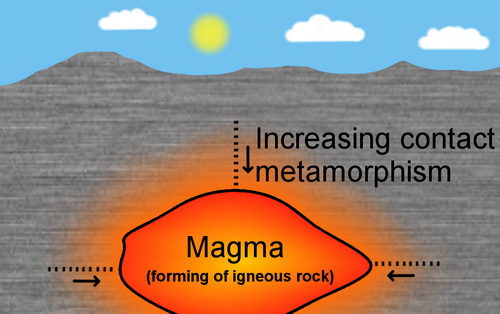 Metamorphic rocks are rocks that have been changed over a long period of time by extreme pressure and heat. These types of rocks can be made by pressure deep under the Earth’s surface, from extreme heat caused by magma, or by intense collisions and friction of tectonic plates. Metamorphic rocks are brought up to the Earth’s surface by erosion and uplift. Types of metamorphic rock include marble, slate, quartzite, and gneiss.
Metamorphic rocks are rocks that have been changed over a long period of time by extreme pressure and heat. These types of rocks can be made by pressure deep under the Earth’s surface, from extreme heat caused by magma, or by intense collisions and friction of tectonic plates. Metamorphic rocks are brought up to the Earth’s surface by erosion and uplift. Types of metamorphic rock include marble, slate, quartzite, and gneiss.
Types of metamorphic rock
Marble is formed from the sedimentary rock limestone. Marble is usually white with streaks of color. It can take polish very well which makes it a commonly used rock in architecture and sculpture.
Slate is a fine grained rock derived from the sedimentary rock mudstone. When cut on a parallel to its foliations, slate will form smooth flat sheets that have long been used for roofing, floor tiles, as well as for writing on.
Quartzite is formed from quartz-rich sandstone that has been altered by heat, pressure, and chemical activity. It is very durable and heat resistant, with a similar look to marble but much more sturdy.
Gneiss is a coarse grained rock that can metamorphosize from either igneous or sedimentary rock. Its name comes from the Middle German word gneist, to spark, due to its glittery appearance.
